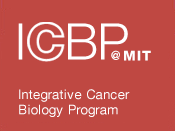| Title | Early signaling dynamics of the epidermal growth factor receptor. |
| Publication Type | Journal Article |
| Year of Publication | 2016 |
| Authors | Reddy, RJ, Gajadhar, AS, Swenson, EJ, Rothenberg, DA, Curran, TG, White, FM |
| Journal | Proc Natl Acad Sci U S A |
| Volume | 113 |
| Issue | 11 |
| Pagination | 3114-9 |
| Date Published | 2016 Mar 15 |
| ISSN | 1091-6490 |
| Abstract | Despite extensive study of the EGF receptor (EGFR) signaling network, the immediate posttranslational changes that occur in response to growth factor stimulation remain poorly characterized; as a result, the biological mechanisms underlying signaling initiation remain obscured. To address this deficiency, we have used a mass spectrometry-based approach to measure system-wide phosphorylation changes throughout the network with 10-s resolution in the 80 s after stimulation in response to a range of eight growth factor concentrations. Significant changes were observed on proteins far downstream in the network as early as 10 s after stimulation, indicating a system capable of transmitting information quickly. Meanwhile, canonical members of the EGFR signaling network fall into clusters with distinct activation patterns. Src homology 2 domain containing transforming protein (Shc) and phosphoinositol 3-kinase (PI3K) phosphorylation levels increase rapidly, but equilibrate within 20 s, whereas proteins such as Grb2-associated binder-1 (Gab1) and SH2-containing tyrosine phosphatase (SHP2) show slower, sustained increases. Proximity ligation assays reveal that Shc and Gab1 phosphorylation patterns are representative of separate timescales for physical association with the receptor. Inhibition of phosphatases with vanadate reveals site-specific regulatory mechanisms and also uncovers primed activating components in the network, including Src family kinases, whose inhibition affects only a subset of proteins within the network. The results presented highlight the complexity of signaling initiation and provide a window into exploring mechanistic hypotheses about receptor tyrosine kinase (RTK) biology. |
| DOI | 10.1073/pnas.1521288113 |
| Alternate Journal | Proc. Natl. Acad. Sci. U.S.A. |
| PubMed ID | 26929352 |
| PubMed Central ID | PMC4801278 |
| Grant List | P30 CA014051 / CA / NCI NIH HHS / United States R01 CA096504 / CA / NCI NIH HHS / United States R01 CA118705 / CA / NCI NIH HHS / United States T32 GM008334 / GM / NIGMS NIH HHS / United States U54 CA112967 / CA / NCI NIH HHS / United States |
